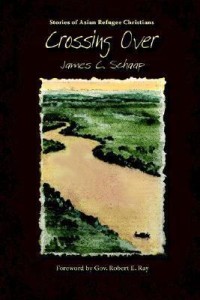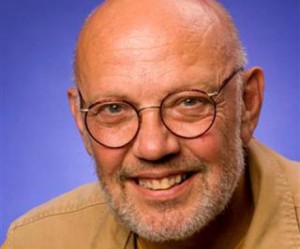I continue to find treasures between the covers of a wonderful anthology, A Syllable of Water: Twenty Writers of Faith Reflect on Their Art. This morning as I sat down to write this post, I found myself shut out of my GoDaddy.com domain, and spent the next hour dealing with issues related to the fact that they “migrated” my account to a new server, saying that it could take 24-48 hours for me to be able to use the site. Fortunately, it’s back up, but now I’m pushed for time, as I have to be somewhere soon. So this will be a bit truncated.
 Since the 2013 Oxford Creative Nonfiction Conference starts two weeks from tomorrow (yes!) I thought I’d do a related post today. James Calvin Schaap, author of several novels, but also a number of collections of creative nonfiction, including Crossing Over: The Stories of Refugee Asian Christians, teaches writing and literature at Dordt College, in Sioux Center, Iowa. His essay, “Deeper Subjects: On Writing Creative Nonfiction,” offers some helpful insights. (An aside: Schaap’s post about the bombings in Boston is worth a read.)
Since the 2013 Oxford Creative Nonfiction Conference starts two weeks from tomorrow (yes!) I thought I’d do a related post today. James Calvin Schaap, author of several novels, but also a number of collections of creative nonfiction, including Crossing Over: The Stories of Refugee Asian Christians, teaches writing and literature at Dordt College, in Sioux Center, Iowa. His essay, “Deeper Subjects: On Writing Creative Nonfiction,” offers some helpful insights. (An aside: Schaap’s post about the bombings in Boston is worth a read.)
But for today, I want to share some of Schaap’s wisdom about creative nonfiction writing. He quotes Lee Gutkind (who will be speaking at the 2013 Oxford CNF Conference in two weeks) in his essay, reminding us that the genre is all about “capturing a real subject—but doing it in a literary way.” Schaap’s essay is full of great information, but I’ll just target three things: (1) What CNF shares with news journalism; (2) What it shares with fiction; and (3) a few thoughts on subtext. (I don’t have time to share his insights on the essay and the joy of epiphany—read the essay yourself for these!)
(1) Schaap starts with Truman Capote’s iconic creative nonfiction book, In Cold Blood. Although Capote relies on the truth about the murders that took place in Kansas in 1959, he immerses himself in the lives of the characters, and uses “techniques of fiction, such as multiples voices” to offer his readers a book that feels more like fiction than journalism.
(2) Moving on to a book about the war in Iraq, The Long Road Home by Martha Radaatz, Schaap says that Radaatz “wants her readers to feel the horror, the grief, the reality of war” so she “takes the time to create scenes—the look of a desert dawn that morning in Iraq, the vacant stare of a young spouse watching the phone after hearing the news of a battle hundreds of miles away.” But this is the main point I want to share from Schaap about this blend of journalism and fiction:
What creative nonfiction like The Long Road Home shares with news journalism is the importance of investigation—of exploration before we can make any attempt at conveying the truth of what happened. What it shares with fiction, however, is a target—the human heart.

(3) And now for a few thoughts on subtext. Creative nonfiction, according to Schaap, “always has a subtext. It always offers more than meets the eye, a reality behind the story. Metaphor is important in creative nonfiction because the story itself—while compelling—almost always suggests something greater, some theme or issue or idea.”
I immediately thought about the essay I’m currently revising for one anthology, and one I’m considering for another. Do they suggest something greater? Schaap uses Tracy Kidder’s story about the medical doctor, Paul Farmer, Mountains Beyond Mountains, which is about a man deeply driven by the desire to alleviate the suffering of the poorest of the world’s poor. Although Kidder uses lots of details to take us into the hospitals, prisons and slums, the book is about something more:
In showing so clearly how Farmer lives, it’s impossible not to measure themselves by Farmer’s life, not because Farmer is a saint but because the portrait is so richly human that all of us feel our own hearts beating in the narrative.
Do your readers feel their hearts beating in the narrative of your creative nonfiction pieces? Schaap gives us lots to think about as we continue to hone this craft. And if you’re trying your hand at this, I hope you’ll join us in Oxford for a fabulous weekend, May 2-5. Thanks for reading.
A shameless and brazen plug for some of my favorites in this genre:
http://asinusspinasmasticans.wordpress.com/2009/02/27/the-mythopoesis-of-america-clairvoyant-non-fiction/
Visionary realism… a realm I’m not very familiar with. Thanks for reading, and linking:-)